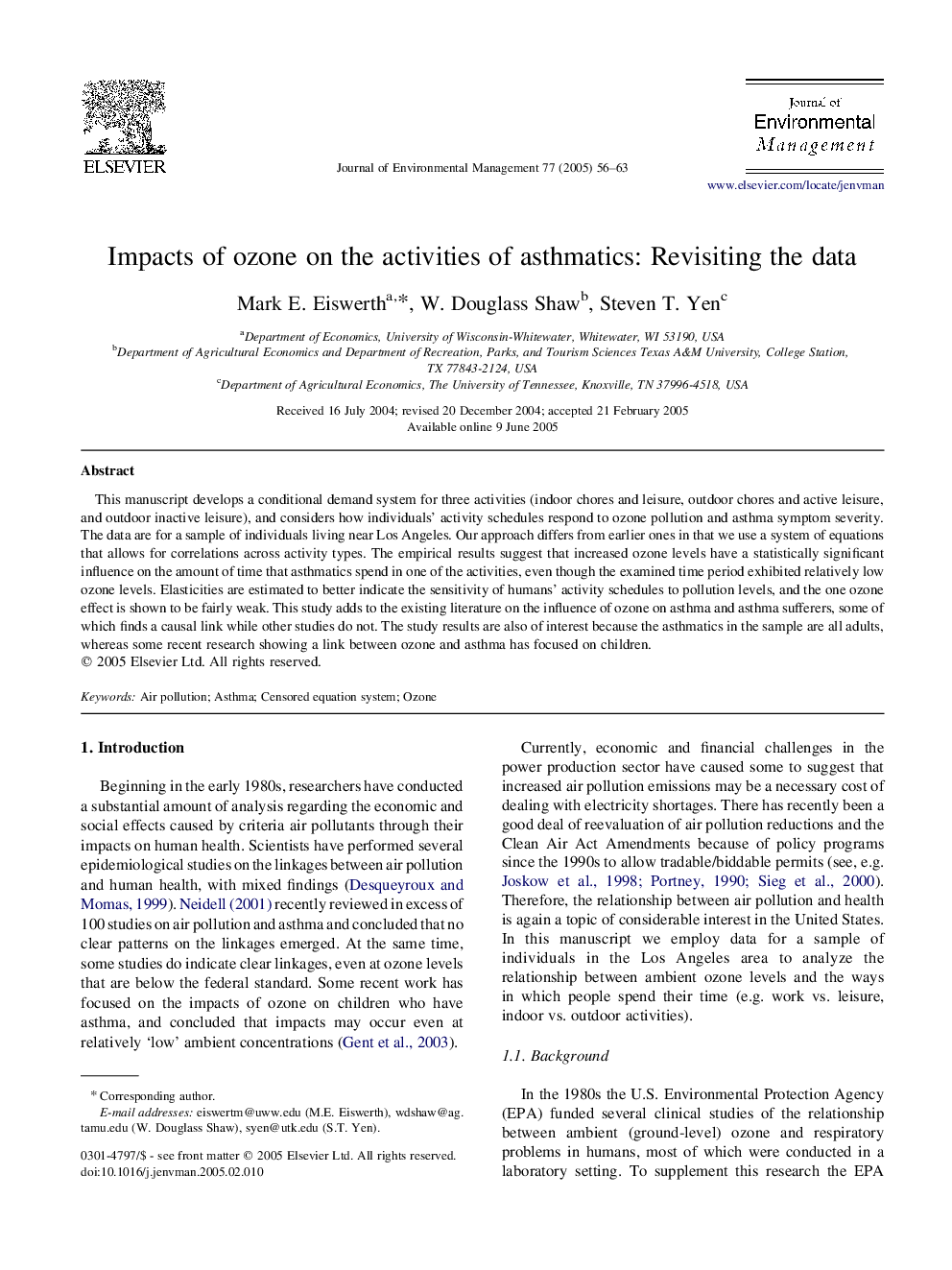| Article ID | Journal | Published Year | Pages | File Type |
|---|---|---|---|---|
| 10505666 | Journal of Environmental Management | 2005 | 8 Pages |
Abstract
This manuscript develops a conditional demand system for three activities (indoor chores and leisure, outdoor chores and active leisure, and outdoor inactive leisure), and considers how individuals' activity schedules respond to ozone pollution and asthma symptom severity. The data are for a sample of individuals living near Los Angeles. Our approach differs from earlier ones in that we use a system of equations that allows for correlations across activity types. The empirical results suggest that increased ozone levels have a statistically significant influence on the amount of time that asthmatics spend in one of the activities, even though the examined time period exhibited relatively low ozone levels. Elasticities are estimated to better indicate the sensitivity of humans' activity schedules to pollution levels, and the one ozone effect is shown to be fairly weak. This study adds to the existing literature on the influence of ozone on asthma and asthma sufferers, some of which finds a causal link while other studies do not. The study results are also of interest because the asthmatics in the sample are all adults, whereas some recent research showing a link between ozone and asthma has focused on children.
Keywords
Related Topics
Physical Sciences and Engineering
Energy
Renewable Energy, Sustainability and the Environment
Authors
Mark E. Eiswerth, W. Douglass Shaw, Steven T. Yen,
